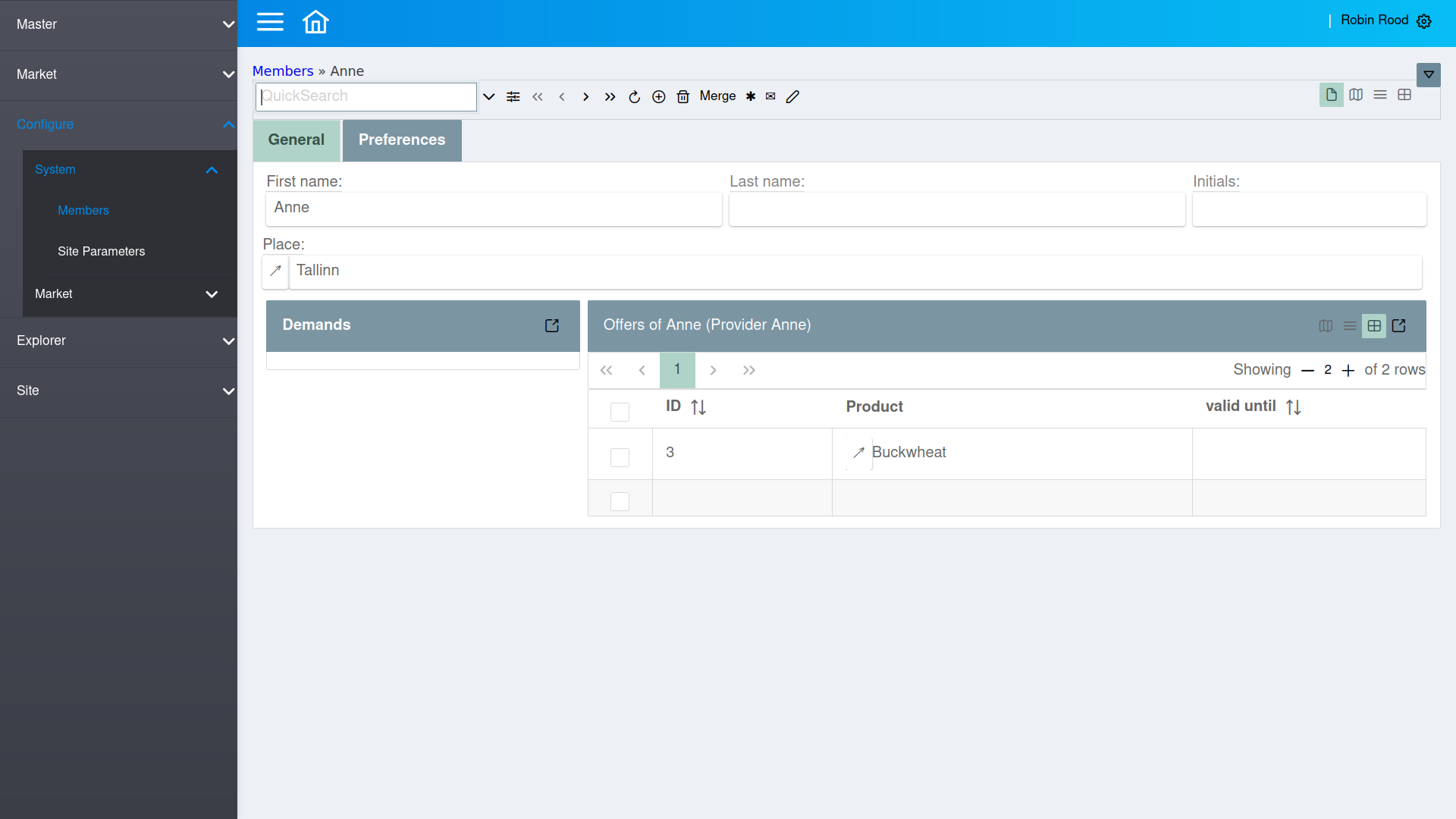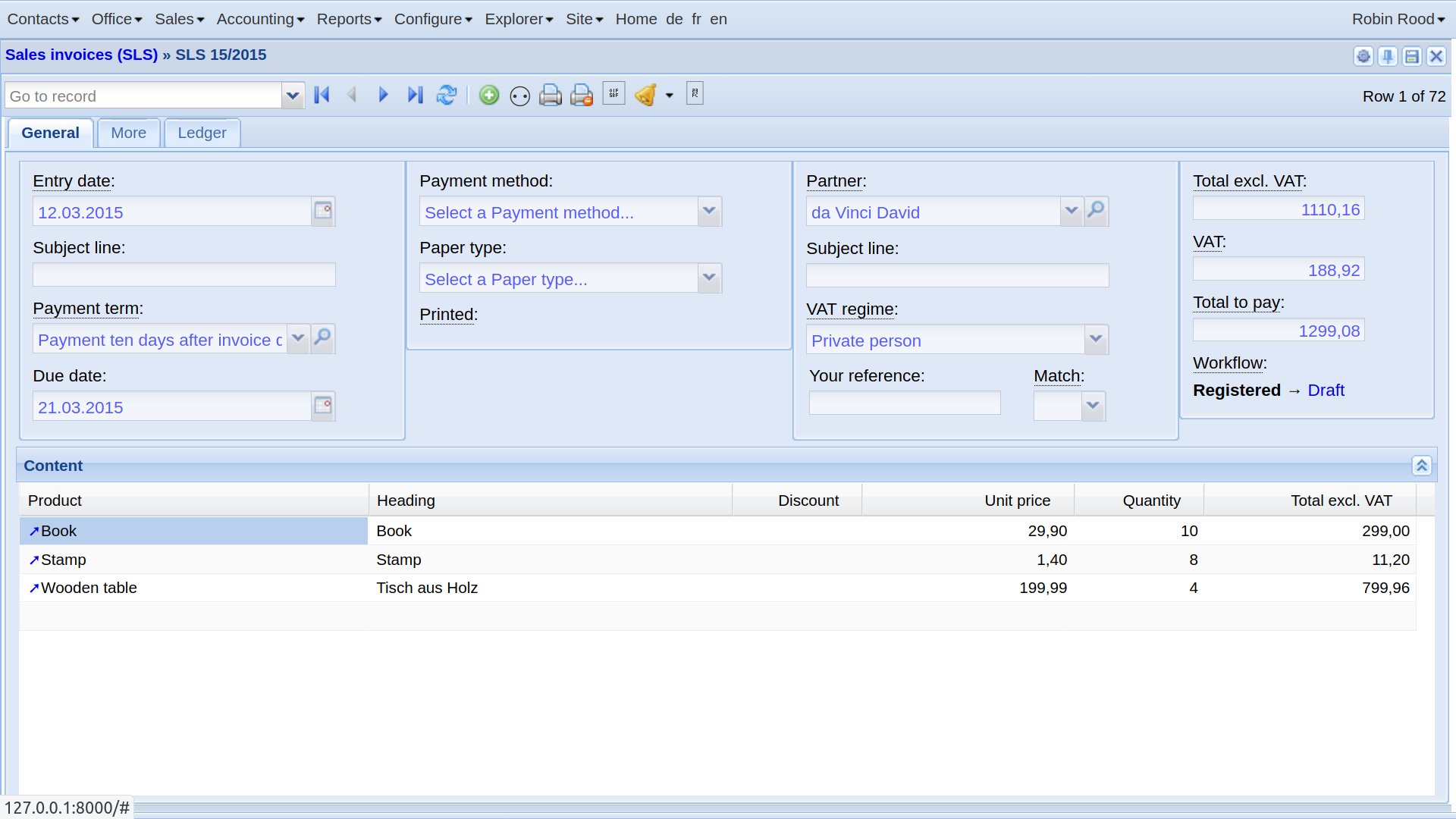Welcome | Get started | Dive | Contribute | Topics | Reference | Changes | More
More about layouts¶
The detail_layout attribute¶
The detail_layout is normally an instance of
DetailLayout or a
subclass thereof. For example:
class FooDetail(dd.DetailLayout):
...
class Foos(dd.Table):
...
detail_layout = FooDetail()
It is possible and recommended to specify detail_layout as
a string, in which case it will be resolved at startup as follows:
If the string contains at least one newline (or no newline and
also no dot) then it is taken as the main of a
DetailLayout.
For example:
class Foos(dd.Table):
...
detail_layout = """
id name
description
"""
If the string contains a dot (‘.’) and does not contain any newlines, then Lino takes this as the name of the class to be instantiated and used.
For example:
class Courses(dd.Table):
...
detail_layout = 'courses.CourseDetail'
This feature makes it possible to override the detail layout in an
extended plugin. Before this you had to define a new class and to
assign an instance of that class to every actor which uses it.
But e.g. in lino_xl.lib.courses we have a lot of subclasses
of the Courses actor.
Class-based detail layouts¶
Code examples in this document are taken from The LETS tutorial unless otherwise specified.
You can define a detail window by setting the detail_layout attribute directly as a multi-line text
containing the names of data elements, as in the following example:
class Members(dd.Table):
...
detail_layout = """
id name place email
OffersByMember DemandsByMember
"""
Result:

But you can get the same result by saying:
class MemberDetail(dd.DetailLayout):
main = """
id name place email
OffersByMember DemandsByMember
"""
class Members(dd.Table):
...
detail_layout = "lets.Members"
This syntax is slightly more verbose but has several advantages:
It lets you define “panels” in order to group the fields on your window.
It lets you define tabbed detail layouts.
It makes it more easy to override the layout by plugins that inherit from your plugin.
A detail layout becomes tabbed when its main attribute has
only one row of layout elements.
- tabbed detail layout¶
A detail layout that has a series of tabs.
The elements mentioned in the main attribute of a tabbed detail layout
must have labels, which become the label of their tab. They don’t need to be
panels: they can be a slave table or a text field.
For example, the detail layout of a site user in step 4 is a tabbed detail layout with two tabs, labelled “General” and “Preferences”:


Here is the source code used to define this:
from lino.modlib.users.ui import *
class UserDetail(UserDetail):
main = "general contact"
general = dd.Panel("""
first_name last_name initials
place
market.DemandsByCustomer market.OffersByProvider
""", label=_("General"))
contact = dd.Panel("""
box1
remarks:40 users.AuthoritiesGiven:20
""", label=_("Preferences"))
box1 = """
username user_type:20
language time_zone
id created modified
"""
Note that the general and contacts are tab panels defined by
instantiating the dd.Panel class while box1 is a simple panel that
needs no label.
Another example is the detail layout of a
lino_xl.lib.trading.VatProductInvoice:

Here is the source code used to define this layout:
class InvoiceDetail(dd.DetailLayout):
main = "general more accounting"
general = dd.Panel("""
panel1:30 panel3:30 panel2 totals:20
ItemsByInvoice
""", label=_("General"))
more = dd.Panel("""
id user language #project #item_vat
intro
""", label=_("More"))
accounting = dd.Panel("""
journal accounting_period number #narration
vat.MovementsByVoucher
""", label=_("Ledger"))
totals = dd.Panel("""
total_base
total_vat
total_incl
workflow_buttons
""")
panel1 = dd.Panel("""
entry_date
#order subject
payment_term
due_date:20
""")
panel2 = dd.Panel("""
partner
subject
vat_regime
your_ref match
""")
panel3 = dd.Panel("""
payment_method
paper_type
printed
""")
Combined list and detail view¶
When you add a navigator_panel to a detail layout, it can make
sense to “skip the list window” by setting the default action of a table view to
detail. Examples:
Or the detail layout of lino_xl.lib.contacts.Person in Lino Amici:
class PersonDetail(PersonDetail):
main = "general #contact family more"
general = dd.Panel("navigation_panel:20 general_box:60", label=_("General"))
general_box = """
overview contact_box #phones.ContactDetailsByPartner
contacts.RolesByPerson:30 lists.MembersByPartner:30 cal.EntriesByGuest:30
"""
contact_box = dd.Panel("""
last_name first_name:15
gender #title:10 language:10
birth_date age:10 id:6
""") #, label=_("Contact"))
family = dd.Panel("""
humanlinks.LinksByHuman:50 households.MembersByPerson:30
households.SiblingsByPerson
""", label=_("Family"))
more = dd.Panel("""
... comments.CommentsByRFC:30
""", label=_("More"))